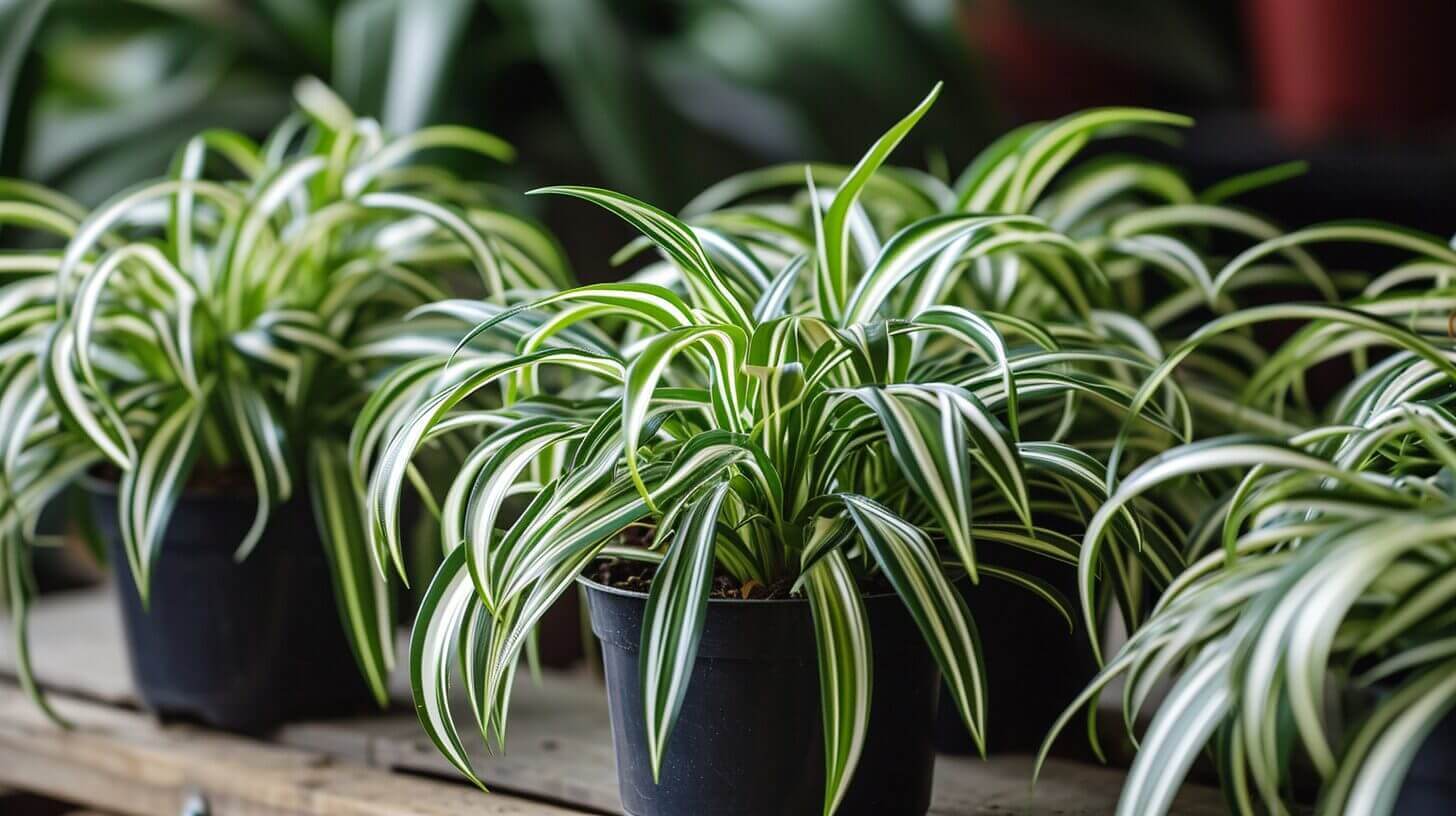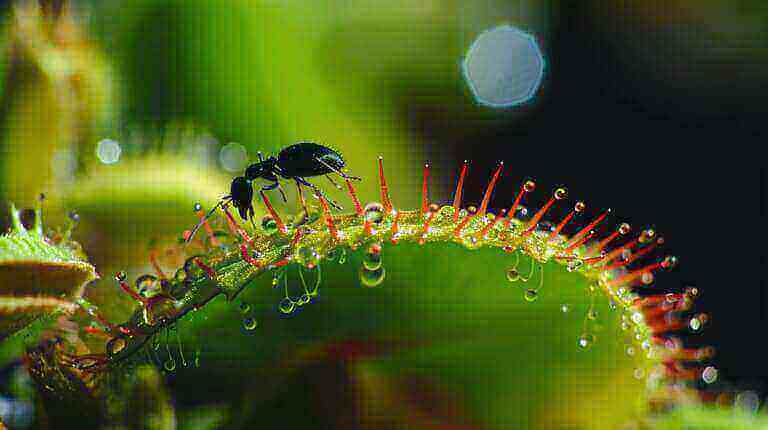How to Propagate Spider Plant From a Cutting: A Step-By-Step Guide
Did you know that it is easy to propagate your spider plant(Chlorophytum comosu? Spider plants are not only beautiful additions to your home or office, but they are also incredibly easy to grow from cuttings.
In fact, with just a little bit of know-how, you can propagate these popular indoor plants and enjoy an abundance of greenery in no time.
In this step-by-step guide, we will walk you through the process of growing a spider plant from a cutting, ensuring your success in cultivating these lovely and air-purifying plants.
Key Takeaways
- Select a healthy spider plant cutting that is free from disease or damage.
- Use a well-draining potting medium with equal parts peat moss, perlite, and compost.
- Root the cutting in water with a rooting hormone solution, changing the water every few days.
- Care for the rooted cutting by watering when the top inch of soil is dry, placing it in bright, indirect sunlight, and feeding with a balanced fertilizer every two weeks.
Selecting a Healthy Spider Plant Cutting For Propagation
One of the most important steps in growing a spider plant from a cutting is to carefully select a single healthy cutting to ensure successful propagation. When propagating spider plants, it is crucial to choose a cutting that is free from any signs of disease or damage. Look for a cutting that has vibrant green leaves and is firm to the touch. Avoid selecting cuttings that have yellowing or wilting leaves, as these may indicate underlying health issues.
Additionally, choose a cutting that has multiple nodes, as these are the areas from which new roots will emerge. By selecting a healthy spider plant cutting, you increase the chances of successful plant propagation and can enjoy a thriving spider plant in no time.
Preparing the Potting Medium
Before planting the spider plant cutting, it is important to prepare the potting medium to provide the necessary nutrients and support for healthy root development. Choosing the right soil and potting mix ingredients is crucial for the successful growth of your spider plant.
To create an ideal potting mix, consider using a well-draining soil that retains some moisture. A mixture of equal parts peat moss, perlite, and compost will provide the necessary nutrients and aeration for the roots to thrive.
| Ingredient | Purpose |
|---|---|
| Peat moss | Retains moisture and improves soil structure |
| Perlite | Enhances drainage and prevents waterlogging |
| Compost | Supplies essential nutrients for plant growth |
Propagate Spider Plant Cutting
To ensure successful spider plant propagation in water, it is essential to carefully place the spider plant cutting in a rooting hormone solution and immerse it in water. This step is crucial in promoting root development and healthy growth. There are various way to propagate spider plants, but to propagate spider plants in water is one of the most popular and effective techniques.
To begin, prepare a clean container with water, ensuring that the cut end of the spider plant cutting is fully submerged in water. It is important to change the water every few days to prevent stagnation and the growth of harmful bacteria. Additionally, adding a few drops of rooting hormone solution to the water can enhance the rooting process.
During this stage, it is crucial to place the container in a warm and well-lit area, but away from direct sunlight. The spider plant cutting will typically take a few weeks to develop roots. Once the roots are well-established, the cutting can be transferred into a potting medium and cared for as a mature spider plant.
Caring for the Rooted Cutting
After the rooted cutting has been transferred into a potting medium, it is important to establish a regular watering schedule to ensure proper hydration and growth. Caring for the rooted cutting involves paying attention to its needs and addressing any issues that may arise.
Here are some key steps to take:
Watering:
- Water the plant thoroughly when the top inch of soil feels dry.
- Avoid overwatering, as it can lead to root rot.
Light and Temperature:
- Place the plant in bright, indirect sunlight.
- Maintain a temperature between 60-75°F (15-24°C).
Fertilizing:
- Feed the plant with a balanced, water-soluble fertilizer every two weeks during the growing season.
- Be careful not to overfertilize, as it can cause roots burning.
Transferring the Spider Plant to a Larger Pot
Transfer the spider plant to a larger pot once it has outgrown its current container. Repotting the spider plant is necessary to provide it with enough space for its roots to grow and to ensure its overall health and vitality.
When potting up the spider plant, choose a pot that is one size larger than its current one, with drainage holes at the bottom. Fill the new pot with fresh, well-draining potting soil, leaving enough space at the top for watering.
Gently remove the spider plant from its old pot, being careful not to damage the roots. Place the plant in the center of the new pot and fill the remaining space with soil, ensuring that the roots are covered.
Water the plant thoroughly and place it in a well-lit area, away from direct sunlight. Regularly monitor the plant’s growth and repeat the repotting process as needed.
Frequently Asked Questions
Can I Grow a Spider Plant From a Cutting in Water Instead of Using a Potting Medium?
Water vs potting medium for spider plant cuttings:
Can spider plant cuttings be rooted in a vase?
Spider plant cuttings can indeed be rooted in water as an alternative to using a potting medium.
Water propagation involves placing the cutting in a vase or jar filled with water, ensuring that the bottom nodes are submerged.
This method allows the cutting to develop roots, and once the roots have grown, it can be transferred to a potting medium for continued growth.
How Long Does It Typically Take for the Spider Plant Cutting to Root?
The time it takes for spider plant cuttings to root can vary depending on several factors. These factors include the environmental conditions, such as temperature and humidity, as well as the health and vigor of the cutting itself.
Generally, it can take anywhere from a few weeks to a couple of months for spider plant cuttings to develop roots. However, there are some tips that can help speed up the rooting process, such as using a rooting hormone or providing bottom heat.
Should I Use Any Specific Type of Fertilizer for My Spider Plant Cutting?
When it comes to fertilizing spider plant cuttings, it is important to choose the right type of fertilizer. There are various types of fertilizers available in the market that can be used for spider plant cuttings.
However, it is recommended to use a balanced, water-soluble fertilizer with equal parts of nitrogen, phosphorus, and potassium. This will provide the necessary nutrients for the plant’s growth and development.
Some of the best fertilizers for spider plant cuttings include general-purpose fertilizers, organic fertilizers, or specialized fertilizers formulated for houseplants.
Can I Grow a Spider Plant Cutting in Direct Sunlight?
Growing spider plant cuttings in direct sunlight can be a tricky endeavor. While spider plants thrive in bright, indirect light, direct sunlight can be too intense and may cause damage to the delicate leaves.
It is best to place spider plant cuttings in a location that receives bright, indirect light, such as near a north-facing window or in a well-lit room. This will provide the optimal conditions for the cuttings to grow and establish themselves successfully.
Can Propagating Spider Plants Help Speed Up Their Growth?
Propagating spider plants by using the “Tips for faster spider plant growth” can indeed help speed up their growth. By dividing the plant into multiple smaller sections and providing each with proper care, you can encourage faster growth. Make sure to place the cuttings in water until they develop roots, then transfer them to soil.
Can I Prune My Spider Plant Cutting to Encourage More Growth?
Pruning a spider plant cutting can indeed encourage more growth. Pruning benefits include promoting bushier, fuller growth and preventing the plant from becoming leggy or straggly.
To prune a spider plant cutting, use clean, sharp pruning shears to remove the desired portion of the plant. Make the cut just above a node, which is where new growth occurs. This will stimulate the plant to produce new shoots and branches, resulting in a more compact and attractive plant.
How do I propagate a spider plant?
To propagate a spider plant, you can use either the water or soil propagation method. This involves taking a baby spider plant, or spiderette, that is attached to the mother plant and placing it in water or soil until it grows roots.
What are spider plant babies?
Spider plant babies, also known as spiderettes or plantlets, are small offshoots that grow from the main plant. They can be used to propagate new spider plants.
What is involved in spider plant propagation?
Spider plant propagation involves taking a spiderette from the parent plant and placing it in water or soil. Over time, the baby plant will take root and grow into a new spider plant.
Can I propagate a spider plant in water?
Yes, you can propagate a spider plant in water. Simply place the base of the baby spider plant in tap water and wait for it to grow roots.
What is the best propagation method for spider plants?
Both water and soil propagation methods work well for spider plants. The best method depends on your personal preference and care capacity.
Can I propagate a spider plant in soil?
Yes, you can propagate a spider plant in soil. Place the baby plant in potting soil and keep the soil moist until it takes root.
Can I grow spider plants from seed?
While it’s possible to grow spider plants from seed, it’s much easier to propagate them using spiderettes.
What is the mother plant in relation to spider plants?
The mother plant is the main plant from which baby spider plants, or spiderettes, grow. These babies can be used to propagate new plants.
What is the best way to propagate a spider plant?
The easiest way to propagate a spider plant is by using its babies or spiderettes. These can be placed in either water or soil to grow new plants.
Can you provide a step-by-step guide to propagating a spider plant?
Sure! Here’s a simple guide:
- Identify a baby spider plant attached to the mother plant.
- Cut it off carefully.
- Place it in water or potting soil.
- Wait for it to grow roots.
- Once roots have developed, if propagated in water, transfer it to potting soil.
- Continue regular spider plant care.
Can I propagate my own spider plants in water?
Absolutely! Propagating your own spider plants in water is an easy and effective method. Just make sure to change the water regularly to prevent stagnation.
Can I use either water or soil for propagating my spider plants?
Yes, both methods are effective for propagating your own spider plants. It mostly comes down to personal preference.
How do I grow new spider plants?
New spider plants can be grown by propagating baby plants or “spiderettes” from an adult “mother” plant using either water or soil methods.
Can You Propagate a Spider Plant Without Knowing How to Care for It?
Can you propagate a spider plant without knowing how to care for it? It’s not ideal, but not impossible. The spider plant care guide provides valuable information on propagating this popular houseplant. By following the guide’s instructions, you can successfully propagate spider plants and then learn how to care for them, ensuring their healthy growth and longevity.
How do I care for my new baby spider plants?
Care for your new baby spiders by ensuring they have indirect light, keeping their soil moist but not soggy, and maintaining moderate indoor temperatures.
How do I propagate my own baby spiders using potting soil?
To propagate your own baby spiders using potting soil, simply place the base of the baby spiders in potting soil and keep it moist until roots develop.







